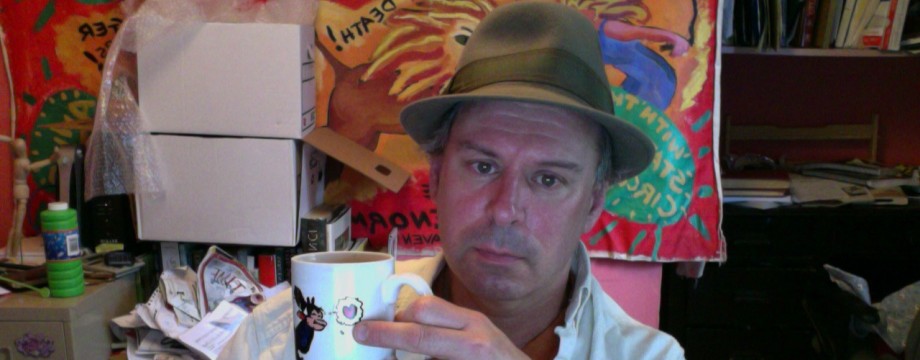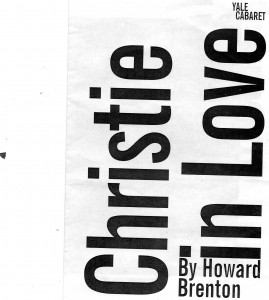Christie in Love
Through Oct. 29 at the Yale Cabaret. Written by Howard Brenton. Directed by Katie McGerr. Sound Design: Matt Otto. Fight Choreography: Fisher Neal. Dramaturg: Mary Laws. Stage Manager: Hannah Sullivan. Producer: Shane D. Hudson. “Visual Design by the Company.” Performed by Lucas Dixon (Constable), Rob Grant (Inspector) and Max Roll (Christie).
Dark chilly nights have miraculously appeared this week to underscore the themes of a slew of depression-season Yale productions.
It’s intense enough that the Yale Cabaret would choose to stage Howard Brenton’s 20th century social nightmare Christie in Love (its very title a perversion) on the same week that the Yale Rep world-premieres Amy Herzog’s neo-noir youth angst explosion Belleville and the Yale School of Drama traffics in soul-selling and spark-extinguishing with Gertrude Stein’s Doctor Faustus Lights the Lights. Now the weather is complying with the already ubiquitous creepiness.
The first time I saw Christie in love, at Tufts university in the early ’80s, it featured Hank Azaria, who already, as a college undergrad, had an uncanny knack for extreme accents (in this case British cockney slowing foul limericks). It was hard to restrain Hank Azaria even then, but there was no need. This Yale Cab production doesn’t hold back the Monty Pythonesque excesses either. The accents rise and fall, the Britishish eccentricities are blustered and bolstered.
Howard Brenton’s play is so amazing because it can suck in large dollops of the absurdist comedy that was so popular in England at the time (iot was written in 1970, when Monty Python and The Goodies were in full flower), yet chill you to the bone with sober realism. The play, after all, is based on a real-life crime that was the mid-‘50s British equivalent of John Wayne Gacy—a killer who’d washed bodies in and around his home. The particular horror of Christie’s case was that his testimony had helped police convict and execute another man for a couple of killings Christie probably did himself.
Brenton’s author’s note in the script opens by insisting that “Christie’s first appearance is in the Dracula tradition. Happy horror, creeps and treats.”
The play not only still makes sense as an overall condemnation of the lurid media (the set is a pile of crumpled up newspapers posing as Christie’s backyard), desensitized urban society (those coarse limericks get increasingly distasteful), and the competitive and power-grubbing nature of modern life in general (a constable has to go home to the wife and assume normalcy after digging up human bones; an inspector plays interrogation-room psychological games with the murderer), it’s still funny and it’s still crazy-scary. The purposefully all-male cast has to internalize and awkwardly socialize, and the three actors here do so with an air of archness and exasperation that’s exhilirating.
I’m surprised productions of this play, which made Brenton’s reputation overnight when David Hare’s Portable Theater production of it moved swiftly to the Royal Court Theatre in 1970) don’t come around more often. It should be a rite of passage for young dramatic actors the way Zoo Story has become. It’s not the sort of play where you can compliment the cast and creative team for maintaining a consistent tone. It’s the kind where you praise them for juggling so many knives in the air.

